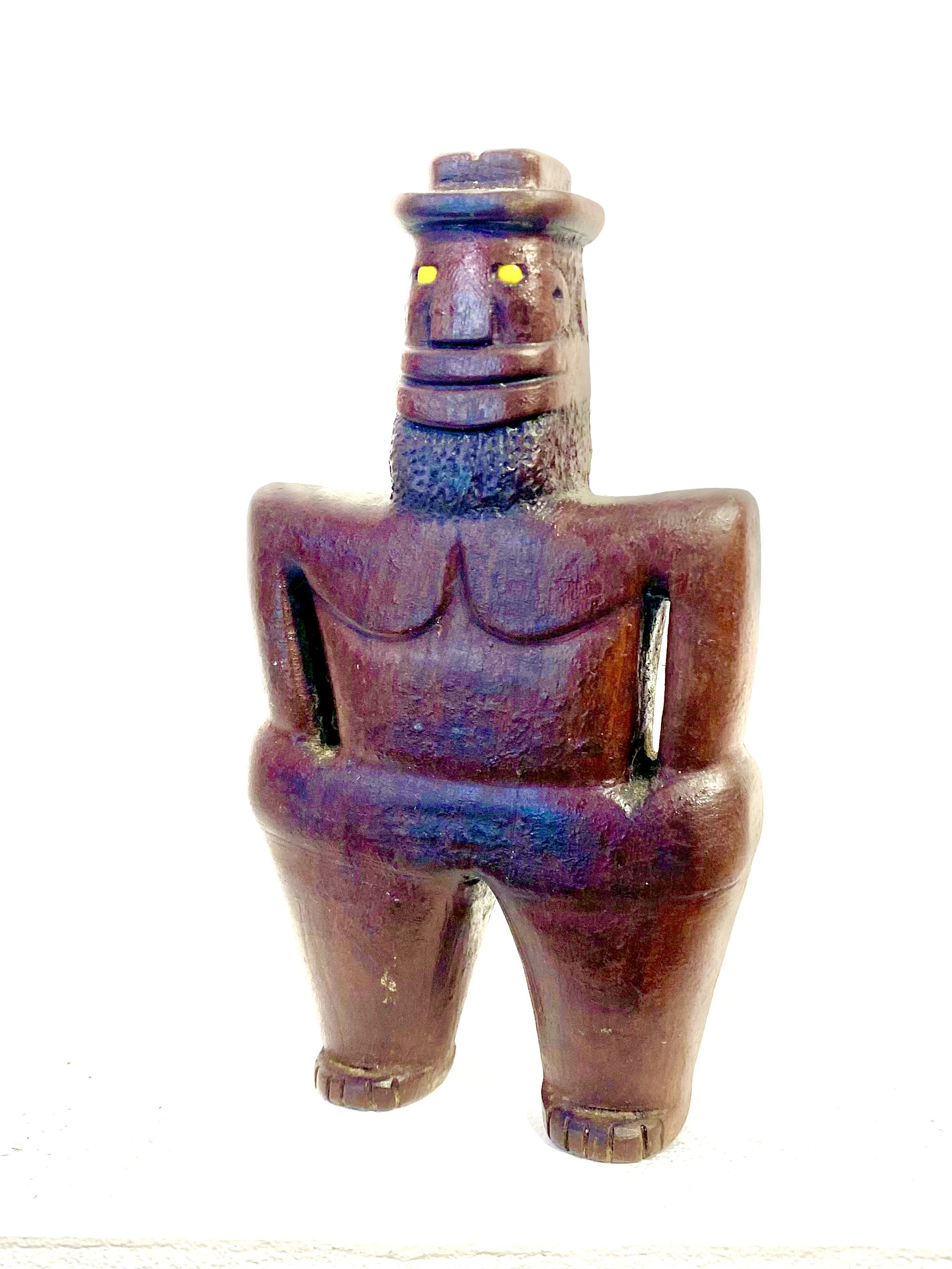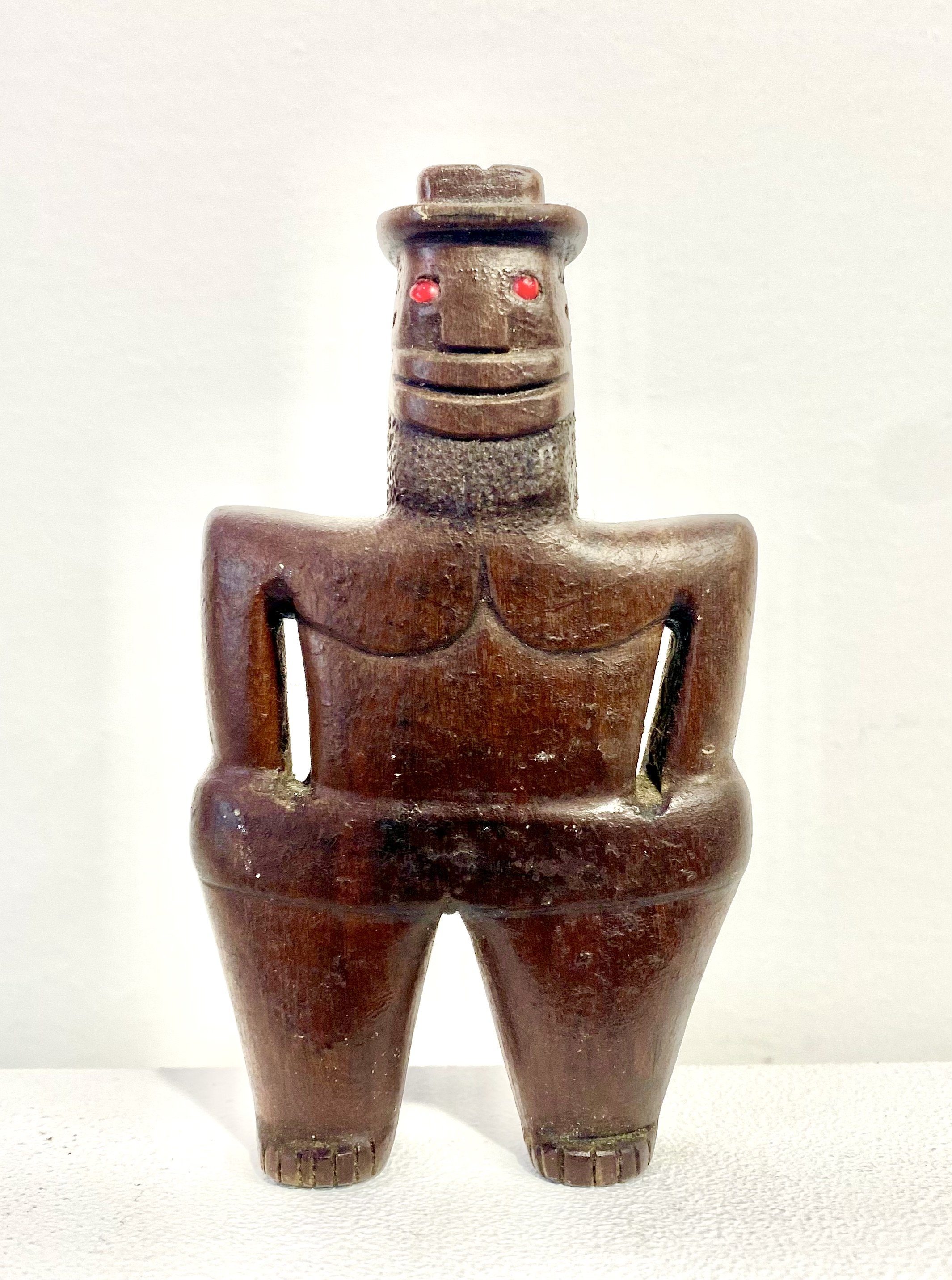 Image 1 of 4
Image 1 of 4

 Image 2 of 4
Image 2 of 4

 Image 3 of 4
Image 3 of 4

 Image 4 of 4
Image 4 of 4





Jolly Janus Figure
A jolly little fedora-wearing, Janus-faced figure of unknown origin. On one side, he has red glass beads for eyes; the other side is identical except that the eyes are yellow. Janus was the Roman god of beginnings and endings, of the passage through time and space, and the duality of life (as well as doorways and gates, among other things). Depictions of the god usually have two faces, one looking forward, and one back. He symbolizes transitions of all kinds, from past to future, from youth to adulthood, from origin to destination. The month of January, the beginning of the year, is named for Janus.
The concept of Janus is found in many cultures, and is thought to have come to Rome via seafarers from afar. One likely origin is Africa, where Janus figures are commonly seen in ritual art from the central and western parts of the continent in particular. Among some African peoples, the Janus figure is said to represent the connection between the ancestors and the living. This figure is likely a product of the African diaspora, perhaps from the Caribbean. Cute and mysterious!
5" tall x 3" wide x 1" deep.
A jolly little fedora-wearing, Janus-faced figure of unknown origin. On one side, he has red glass beads for eyes; the other side is identical except that the eyes are yellow. Janus was the Roman god of beginnings and endings, of the passage through time and space, and the duality of life (as well as doorways and gates, among other things). Depictions of the god usually have two faces, one looking forward, and one back. He symbolizes transitions of all kinds, from past to future, from youth to adulthood, from origin to destination. The month of January, the beginning of the year, is named for Janus.
The concept of Janus is found in many cultures, and is thought to have come to Rome via seafarers from afar. One likely origin is Africa, where Janus figures are commonly seen in ritual art from the central and western parts of the continent in particular. Among some African peoples, the Janus figure is said to represent the connection between the ancestors and the living. This figure is likely a product of the African diaspora, perhaps from the Caribbean. Cute and mysterious!
5" tall x 3" wide x 1" deep.